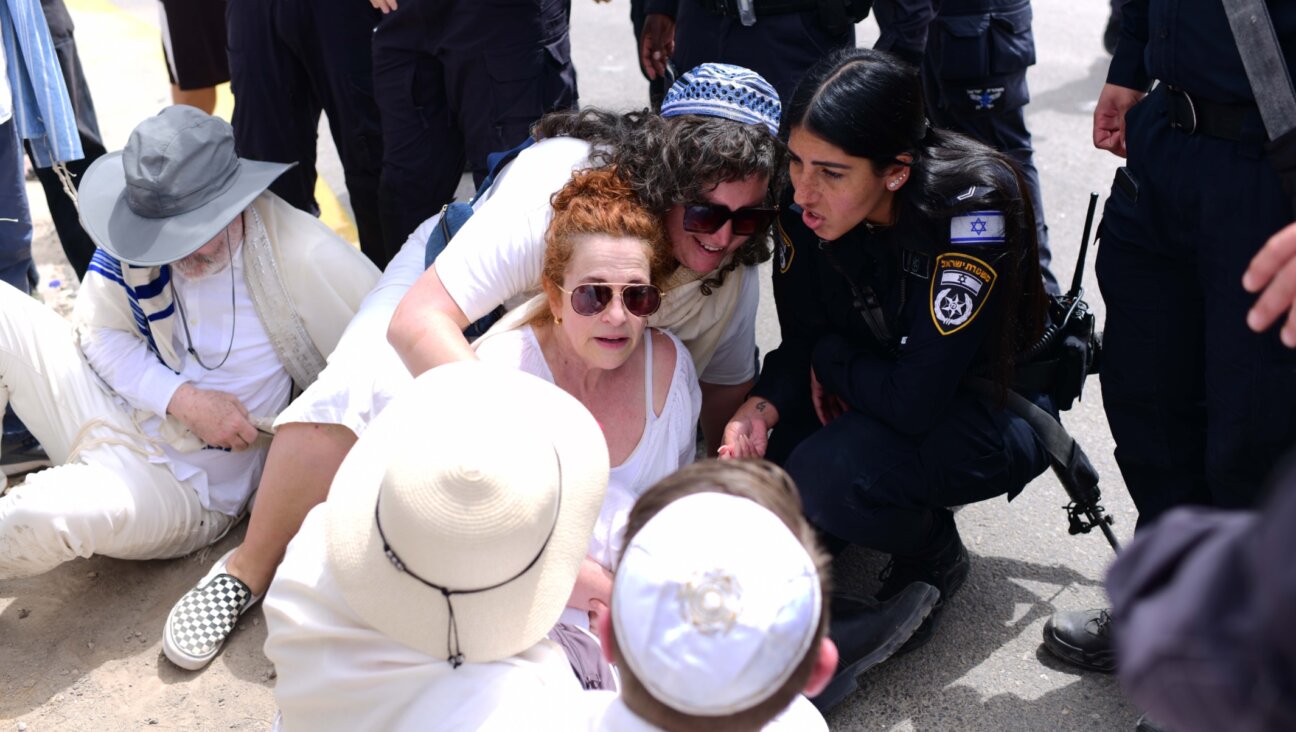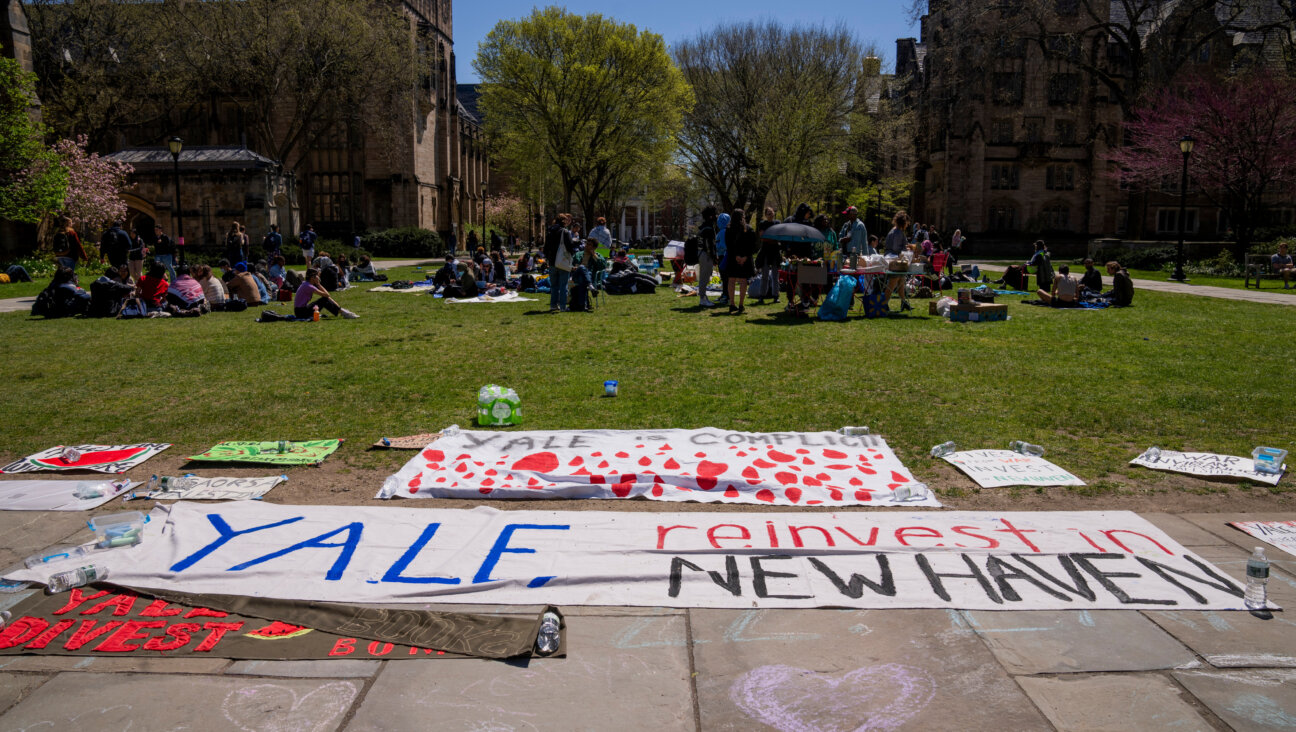Tracking Kasztner’s Train

Train Tracks: Nearly 2,000 people were saved by the plan, but it remains controversial to this day. Items brought by deportees on to Kasztner’s train.
Kasztner’s Train: The True Story of an Unknown Hero of the Holocaust

Train Tracks: Nearly 2,000 people were saved by the plan, but it remains controversial to this day. Items brought by deportees on to Kasztner's train.
Walker & Company, 464 pages, $27.95.
Why are thousands of non-Jews who saved Jews during the Holocaust memorialized in Yad Vashem, while the one Jew who saved thousands of Hungarian Jews is virtually forgotten?
This is the moral injustice that Anna Porter, prominent Canadian publisher and author — Hungarian born and not Jewish — tries to rectify in her impressive biography of Reszo Kasztner, “Kasztner’s Train.” Although he saved 1,684 Jews, Kasztner remains a controversial figure. His frantic efforts to negotiate a “trucks for Jews, goods for blood” deal with Adolf Eichmann, master bureaucrat of the Holocaust, ultimately earned him vilification as a Nazi collaborator after the war. Ironically, while Eichmann or any of the other SS officers Kasztner was forced to confront daily could easily have shot Kasztner, a fellow Jew on a quiet street in Tel Aviv fatally gunned him down in 1957.
Kasztner, a Transylvanian journalist and lawyer, arrived in Budapest in late 1941, alarmed at the news of the horrors that were descending on Jews in Poland under Nazi rule. He soon became a leader of Hungary’s small Zionist movement and plunged into rescue and relief work on behalf of Polish and other Jews escaping Nazi persecution in Hungary. He partnered with Joel and Hansi Brand, a resourceful Zionist couple involved in the same relief work. By late 1942, Kasztner and the Brands were convinced that the Germans would occupy Hungary and institute the same destruction of Hungary’s Jews that was decimating Polish Jewry. In contrast, those of the Hungarian Jewish leadership refused to believe they were in danger as long as Admiral Horthy, the Regent, was still in control. Nevertheless, an Aid and Rescue Committee was established, with Kasztner as its head, giving him authority to negotiate on behalf of Hungarian Jewry.
The Nazis took control of Hungary on March 19, 1944, and replaced Horthy with Ferenc Szálasi’s puppet regime. Kasztner’s worst fears were realized when Eichmann arrived and began the deportation of Hungarian Jews from Ruthenia on April 29. By July 1, according to Eichmann’s assistant, 475,000 Hungarian Jews had been transported to Auschwitz.
Amazingly, an SS official hinted to Joel Brand and Kasztner that Heinrich Himmler might be willing to trade 10,000 trucks for 1 million Jews. The two also realized that they could bribe some of the local SS officers for individual exchanges of Jews and occasional delaying of trains. In the process, Kasztner developed a “trading” relationship with the SS colonel Kurt Becher, an “economic” emissary from Himmler and a powerful rival of Eichmann in Budapest — one that would soon prove fruitful.
In March, Becher realized that the Nazis were headed for failure and that it might be prudent to have Jews who could testify on his behalf at war’s end. At the same time, Kasztner convinced Eichmann to put 20,000 Jews “on ice” for future trading by sending them to work camps in Austria instead of to Auschwitz. As an added “goodwill” gesture, authorized by Himmler, Eichmann reluctantly released 1,684 Jews and provided a train to Switzerland.
But Kasztner now had the dreadful task of choosing whom to save. Because they needed money for bribes to Becher and others — the 20,000 Jews “on ice” in Austria cost $100 each — the wealthy who were chosen were charged $1,500 per person in jewelry or gold. The poor paid nothing.
With Himmler’s apparent approval, Brand was allowed to leave for Turkey on May 17 to negotiate for the trucks with the Allies and Jewish organizations, including the Joint Distribution Committee and the Jewish Agency of the Yishuv in Palestine (the latter headed by Moshe Sharett, ne Moshe Shertok). Whether Brand or Kasztner believed that the Jewish organizations could convince Britain and the United States to agree to such a scheme is moot; they correctly saw an opportunity to slow the trains, hoping that the war would end soon enough to prevent Eichmann from completing his gruesome mission.
But Brand was soon arrested and incarcerated by the British, never to return to Hungary. He was convinced that the Jewish Agency had betrayed him. Neither he nor Kasztner fully realized how little influence or money Jewish organizations had. It was now up to Kasztner and the remaining Hungarian Jewish leadership to rescue as many individuals as possible and to try to delay the shipping of Budapest’s Jews to Auschwitz. Kasztner worked desperately with the Swiss consul, Carl Lutz, to establish safe houses and distribute thousands of Swiss identity cards. Porter also cites evidence that in the dying months of the war, Kasztner was able, with Becher’s assistance, to rescue some additional Jews and, during the last days of Nazi rule, prevent the killing of some of the surviving concentration camp inmates.
Settling in Palestine in 1947 with his wife and young daughter, Kasztner became a leading operative in David Ben-Gurion’s Mapai party and was a candidate for the first Knesset. In 1954, the Herut opposition under Begin tried to embarrass the Mapai government under Moshe Sharett by arguing that Sharrett had negotiated with Brand, and thus indirectly with Himmler and Eichmann. The opportunity to embarrass the Sharett government arrived when that government initiated a libel suit against an elderly Herut supporter, Malchiel Grunwald, who had libeled Kasztner, accusing him of cooperating with the Nazis. The sensational proceedings became a trial of Kasztner rather than the libel suit, and Kasztner lost. The atmosphere of disgust and hate unleashed against Kasztner during the libel trial led a young man, Zeev Eckstein, assisted by two others, to shoot Kasztner in front of his apartment building as he arrived late from his editing job. Kasztner died of his wounds 11 days later, on March 15, 1957. Less than a year later, in January 1958, the Supreme Court reversed the earlier judgment and found that Grunwald was guilty of libel. Kasztner was exonerated.
Is Kasztner an unsung hero? Porter feels he is. In 464 pages of densely detailed prose, plus a number of pages of documentation — the fruit of six years of research on three continents — she vividly brings to life those frenetic months in Budapest before the Nazi collapse. Although she shows Kasztner with all his weaknesses and flaws — egotistical, vain, ambitious and unfaithful to his wife — she concludes that he was indeed heroic in risking his own life daily and saving thousands of Jews. Yad Vashem, releasing the results of its study of Kasztner’s voluminous documents, notes and correspondence, recently came to the same conclusion.
“There was no man in the history of the Holocaust who saved more Jews and was subjected to more injustice than Kasztner,” said Yad Vashem chairman Joseph Lapid, himself a survivor from Hungary, in July 2007, releasing the conclusions of Yad Vashem’s research on Kasztner’s papers. “This is an opportunity to do justice to a man who was misrepresented and was a victim of a vicious attack that led to his death,” he added, calling Kasztner, “one of the great heroes of the Holocaust.”
Adam Fuerstenberg is professor emeritus at Ryerson University and the former director of Toronto’s Holocaust Centre.

I hope you appreciated this article. Before you go, I’d like to ask you to please support the Forward’s award-winning journalism this Passover.
In this age of misinformation, our work is needed like never before. We report on the news that matters most to American Jews, driven by truth, not ideology.
At a time when newsrooms are closing or cutting back, the Forward has removed its paywall. That means for the first time in our 126-year history, Forward journalism is free to everyone, everywhere. With an ongoing war, rising antisemitism, and a flood of disinformation that may affect the upcoming election, we believe that free and open access to Jewish journalism is imperative.
Readers like you make it all possible. Right now, we’re in the middle of our Passover Pledge Drive and we still need 300 people to step up and make a gift to sustain our trustworthy, independent journalism.
Make a gift of any size and become a Forward member today. You’ll support our mission to tell the American Jewish story fully and fairly.
— Rachel Fishman Feddersen, Publisher and CEO
Join our mission to tell the Jewish story fully and fairly.
Only 300 more gifts needed by April 30























